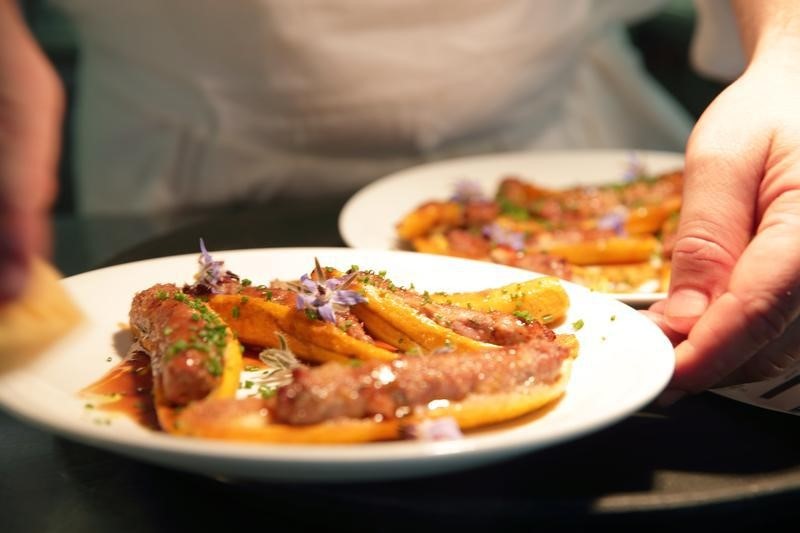LONDON (Reuters) - Britain's government spent almost twice as much as expected on encouraging people to eat in restaurants, cafes and pubs during what proved to be a temporary lull in COVID-19 cases in August.
Official figures released on Wednesday ahead of new spending plans from finance minister Rishi Sunak showed his Eat Out to Help Out scheme cost 849 million pounds ($1.13 billion), much more than an initial government estimate of 500 million pounds.
The programme paid up to half the cost of more than 160 million meals during August to boost one of the sectors hardest hit by the first coronavirus lockdown.
Critics have said it increased the risk of COVID-19 infections, which began to rise steeply again in September and ultimately led to a second round of lockdowns across Britain.
The financial cost is small in the context of more than 200 billion pounds of government spending related to COVID-19 this year which looks set to drive the budget deficit up to 20% of annual economic output, a level not seen since World War Two.
The most expensive single programme, the Job Retention Scheme, has cost 43.0 billion pounds up to Nov. 15, and supported 8.9 million jobs at its peak.
Preliminary tax data released on Wednesday showed that 2.4 million jobs were still fully or partly furloughed on Sept. 30, which the government estimated would rise to 2.7 million once all returns had been received.
Earlier this month Sunak extended the job support scheme until the end of March 2021 due to a resurgence in COVID-19 cases that thwarted his plan to rein in spending on the measure.

